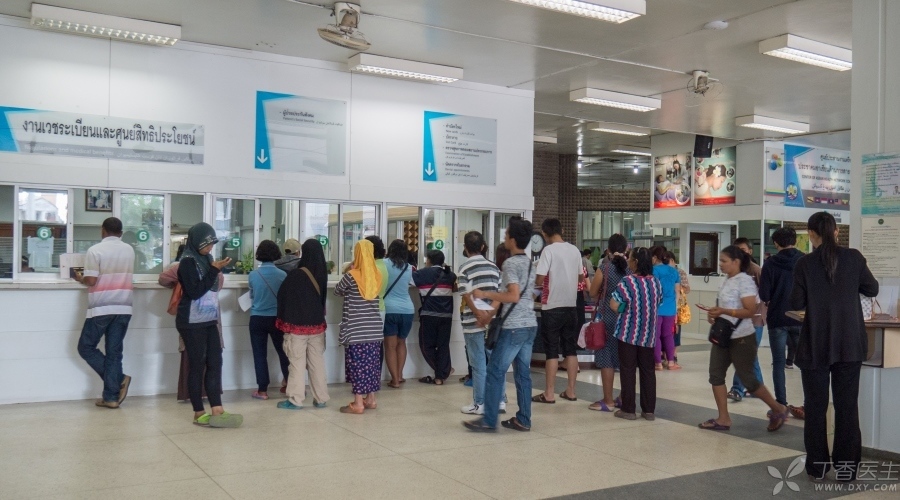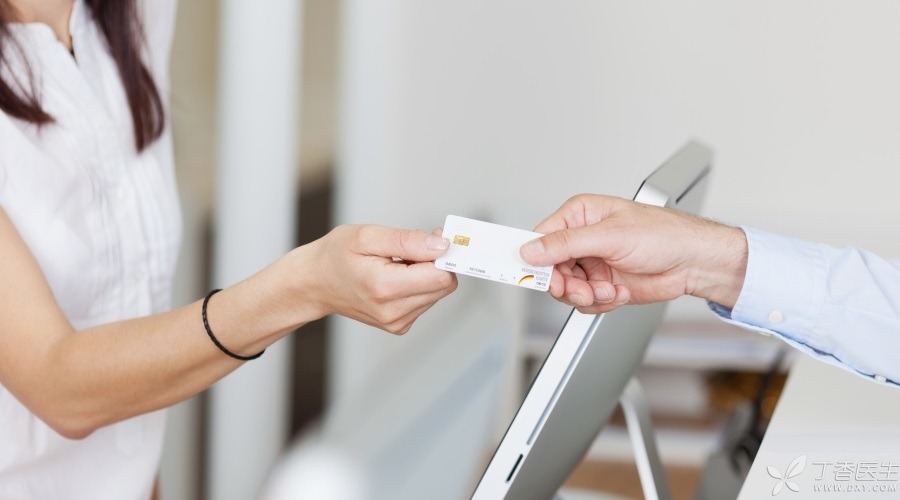
If only three words are used to summarize the difference between seeing a doctor in China and the United States, it is:
- China: Poor Experience US: High Cost
Why do you say that? Next, Dr. Clove will show you.
First, what is the difference between China and the United States in medical treatment experience?
To see a doctor in China, one needs to queue up at the gate of the hospital as early as possible and rush in to register after opening the door.
Now some places have introduced online booking, but there are still many big hospitals that have been keeping the way of queuing for registration. Often at five or six o’clock in the morning, there is a long queue in the outpatient department. Lucky can hang on to the day, unlucky can only hang on to a few days later.
After taking the number, wait for a long time in the crowd, and then you can talk to doctors in the river for 3-5 minutes surrounded by many other patients.
At this time, the battle has just begun. Take the doctor’s prescription or checklist, queue up to make a price, then queue up to pay, then queue up to get medicine, give injections, or check up.
Even if many places use electronic payment pricing and so on, still need to wait in long lines. Some examination results can be obtained on the spot, some results need several days later. Even if you get the results on the same day and then go to see a doctor, unlucky also passed several hours, the doctor is off duty and needs to register again.
To see a doctor once, at least 1 ~ 2 family members are required to accompany him in such a circle, and he has to stay in the hospital for a whole day. Patients from other places may also stay in a small hotel near the hospital for one night. If the examination results come out and need to see doctors from other departments, then the same process needs to be followed again.

However, most American hospitals strictly implement the appointment system and only need to arrive at the front desk 5-10 minutes in advance.
After completing the formalities at the front desk, you can watch and wait in the waiting room. The waiting room is equipped with comfortable sofas and televisions, and there are few people, because no one needs to come in advance, and the patients are basically alone and do not need to be accompanied.
About half an hour or so, a nurse will come and accompany the patient to complete the whole medical treatment process.
First of all, the nurse will take the patient to simply measure his height, weight, blood pressure and body temperature, ask about the general situation, and input the case into the computer. Then, the patient will be arranged in a single room to wait for the doctor to arrive.
At this time, the doctor has already passed the nurse’s report and medical records, Understand your main appeal. When the doctor knocked at the door and approached the clinic, he actually had a bottom in his heart. Most of them only need 5 ~ 10 minutes to complete the diagnosis and treatment process. After that, B-ultrasound, electrocardiogram and other examinations can basically be done in the room. If blood and injection are needed, they are also operated in this room.
Then the nurse will prepare medical records and prescriptions for you, make an appointment for the next visit, and send you out of the clinic.
In a word, the conclusion is: during the whole process of seeing a doctor, you are basically sitting in the clinic, with doctors and nurses circling around you.
Second, why is medical care so expensive in the United States?
The good experience in the United States is determined by the cost.
As for the cost, it basically depends on whether you have good enough medical insurance, and good medical insurance also requires high premium support. Although most of the purchases are made by your company, you must first find a good company such as Google and Amazon.

There was once a joke like this:
The Chinese student fainted on the road, and the kind passer-by helped call an ambulance. The student immediately woke up and answered in a weak voice, “I’m fine, don’t call an ambulance!” ]
In fact, this is likely to be true, because without insurance, the medical bills in the United States will cost you everything overnight, and the hospital will hire a special debt collection company. If you really can’t afford it, you can negotiate with the hospital, but the whole process is a headache for native Americans, not to mention you who are new here.
However, watered hospital bills and opaque finances are common problems in the US medical system. Sky-high fees are the biggest culprit of medical inflation. For example, if you receive a bill of 1,000 US dollars, the insurance company will help you pay 900 US dollars, and you only need to pay 100 US dollars, which makes you feel that the insurance is worth it. The actual bill is only 300 US dollars, and the insurance company only pays 200 US dollars. For this reason, the insurance company can charge you thousands of US dollars in premium every year.
The high medical expenses in the United States, in turn, raise the premiums of insurance companies, thus forming a vicious circle, and finally the burden on patients becomes heavier and heavier.
In addition, in China, any expert can see who you want to look for and who you want to look for, as long as you queue up early or buy scalpers. However, the United States is basically referred by family doctors and involves insurance coverage. Many doctors even only look at old patients and do not accept new patients.
Therefore, which is better to see a doctor in China or the United States cannot be generalized. It is closely related to your region, your identity, your insurance, your illness and your expectations. For example, young people need to solve problems as quickly as possible, while the elderly expect doctors to explain patiently. The poor think price is the most important, while the rich value medical experience more.
Three, some suggestions on seeing a doctor in the United States

1. Must seriously understand medical insurance
For American students, when buying insurance, understand clearly that those contents can include the maximum amount of insurance. If there is any problem, try to deal with it in the school hospital, sometimes even free of charge.
Every city has Community Health Care/Community Clinic or Free Clinic. Most of these organizations are semi-subsidized or fully subsidized by the Government and can provide affordable or even free medical services to the uninsured or low-income families.
2. No need to go to the hospital for minor problems,
Your body is better than expected, and you really don’t need to go to the hospital for minor problems, because even if you do, American doctors won’t give you a lot of tests and prescribe a lot of drugs for a small fever and cold. This is a doctor’s self-protection medical treatment with Chinese characteristics.
3. Don’t hang up the emergency casually.
The cost of emergency treatment in the United States is really very expensive, which is also the basic respect for emergency doctors and nurses who work hard at night. Even residents with medical insurance will not hang up emergency treatment at will.
Like in China, it is not convenient to ask for leave during the day. When you come to an emergency department at night, American hospitals will tell you with fees that medical resources are not wasted by you.
4. It is suggested to return to China for treatment of serious illness.
If you really encounter a serious illness or need surgery, returning home for treatment is a cost-effective choice.
But if it is really a life-threatening disease, if you have enough economic foundation, or if the company has bought you good enough insurance, treatment in the United States is indeed a better choice.
Four, why is there such a gap?
The most obvious gap is the gap in medical investment.
As of 2016, US investment in health care accounts for 18% of GDP.
In recent years, China’s economy has been taking off continuously, with GDP surpassing Germany and Japan, ranking second in the world, while the investment in the medical industry is only 4.6%, ranking 145th in the world, even lower than neighboring Mongolia and Zambia in Africa, which have poor overall national strength.
Such medical and health expenses have to protect the health of the world’s most populous citizens, and the selfless efforts of Chinese doctors can be imagined. I hope to see that on the basis of economic development in the future, China can increase its investment in the medical industry, care for doctors, and further improve China’s medical level for the benefit of the Chinese people.
However, my friend, what contribution can you make to China’s medical cause? Perhaps when you have dinner with a young doctor friend, take the initiative to buy the list.
